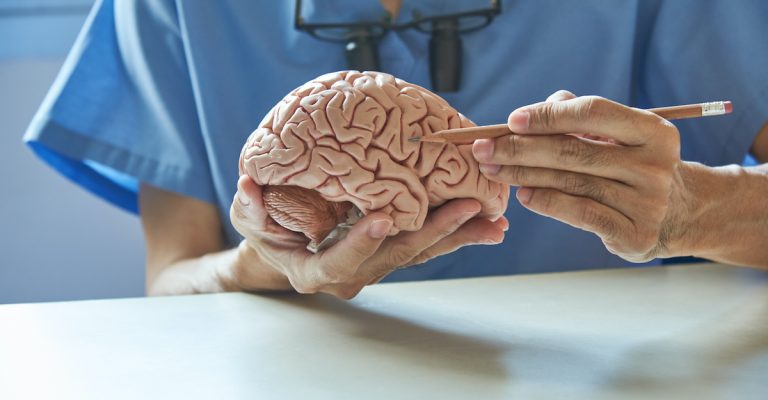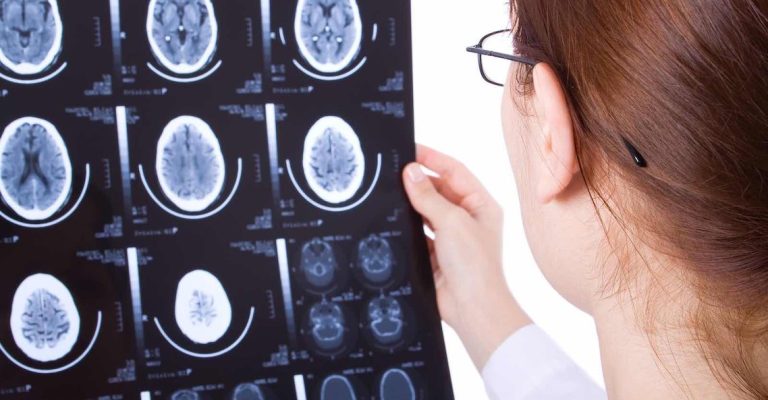
The occipital lobe is the region of the human brain that interprets information from the eyes and converts it into the world as we view it.
The occipital lobe is divided into four regions, each responsible for a separate set of visual functions.
However, visual impairments may express themselves in a variety of ways. As a result, it is critical to obtain a better knowledge of how occipital lobe injury affects people and what rehabilitation options are available.
This article will describe what happens when the occipital lobe is damaged and how to treatments.
The occipital lobe, situated in the cerebral cortex’s back section, is principally in charge of visual processes. It is the portion of the brain that processes visual information.
Visual information exits the occipital lobe through two primary channels after processing: the dorsal and ventral streams.
The ventral stream reaches the temporal lobe. It contains information on the shape, color, and recognition of objects. It essentially aids the temporal lobe in determining “what” you perceive.
On the other hand, the dorsal stream conveys information regarding the location of things in space. Information travels to the parietal lobe, where it is processed further.
The occipital, parietal, and temporal lobes work in tandem. As a result, symptoms of occipital lobe injury may overlap with those of parietal or temporal lobe damage.
What happens if the occipital lobe is damaged? Continue reading to learn more about it in the next section.
Vision and perception issues are common indications of occipital lobe injury.
Blindness and visual abnormalities, such as hallucinations, are the most prevalent symptoms of occipital lobe injury. However, there are various more symptoms that a person may encounter.

Visual abnormalities may occur as a result of an occipital lobe stroke. If you suffer a stroke in this area of your brain, you may have partial vision loss, total blindness, and see things that are not there (visual hallucinations). Other vision disorders may arise in certain persons.
The occipital lobe is not uniform in shape or size. Each lobe contributes differently to your ability to see. The visual issues induced by a stroke in this lobe vary depending on which area is damaged. Strokes in other areas of the brain may also produce alterations in vision.
When the occipital lobe on one side of the brain is affected by a stroke, you may lose half of your vision in each eye. This is known as homonymous hemianopia.
A stroke victim suffering from homonymous hemianopia cannot perceive things on one side. It will be the side opposite the one where the stroke occurred.
For example, if the stroke occurred in the left occipital lobe of the brain, the individual would have difficulty seeing items to the right.
This eyesight issue often affects both of your eyes. You won’t be able to view your right side via either your right or left eye.
Your eyes, on the other hand, work together to see. This is known as visual integration. Your eyes may not be impacted to the same extent if you have homonymous hemianopia.
When you stare straight ahead, you see what is in the center of your field of view. The occipital pole of your brain is in charge of your central vision. While strokes in this brain area are uncommon, they do occur.
An occipital pole stroke might result in a large blind spot in the center of your vision. The blind area will be on the same side of the stroke as the stroke.
This blind spot would make it difficult to see the face of someone standing right across from you.
On the side with the blind spot, you may be unable to see the person’s nose, upper lip, and the bottom part of their eye. However, the person’s shoulder and the top of their head would still be visible.
Color agnosia is a condition that is identical to normal color blindness. Color blindness impairs color perception, while color agnosia impacts color knowledge.
The systems in the eye that allow a person to perceive color are not affected by color agnosia. However, the individual could not tell you what color they perceive.
This implies that a person with color agnosia may pass a standard color blindness test but cannot tell you what color a banana is, for example.
This uncommon disorder causes a person’s visual field devoid of motion. Instead, you could observe motion as a succession of stills, similar to how something moves under a strobe light.
In extreme circumstances, you may not perceive motion, yet your vision of motionless objects will remain intact.

This symptom makes it almost hard to notice more than one item simultaneously. It is frequent after injury to the parietal and occipital lobes.
For example, a person with Balint’s syndrome may only perceive a door or a window while looking at a home rather than the whole structure. They couldn’t see their fork when they were staring at their plate.
To cope with occipital lobe injury, you should begin occupational therapy, which may teach you efficient compensatory strategies.
People with word blindness, for example, may adopt tactics that many blind patients use to read, such as text-to-speech applications or braille.
Furthermore, several therapies that may help you regain some of your eyesight include:
These exercises stimulate neuroplasticity in the brain and may assist enhance eyesight.
This treatment teaches patients who have lost their visual field to adjust by scanning their surroundings more effectively.
During this therapy, the patient wears special prismatic glasses, which shift the visual field to one side, causing the individual to gaze toward the afflicted side to grasp an item. It is useful for those who have hemispatial neglect or hemianopsia. This treatment aids in retraining the brain to process vision on the afflicted side. It is most effective when used in conjunction with visual scanning training.
Make an appointment with a licensed vision rehabilitation expert, a neuro-optometrist, to participate in scanning therapy and other therapies for occipital lobe impairment.
They will not heal your visual loss but make a living with it a bit easier.
Occipital lobe damage may result in various physiological dysfunctions, including blurred vision, trouble standing, and blindness. Some disorders, such as epilepsy, may be linked to occipital lobe dysfunction.